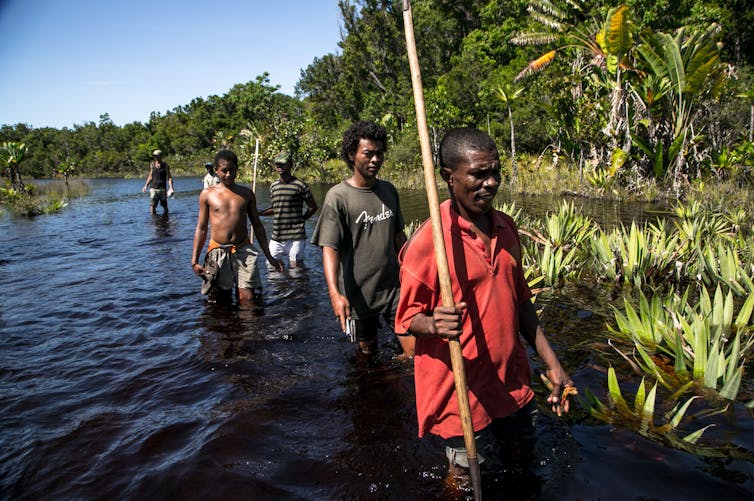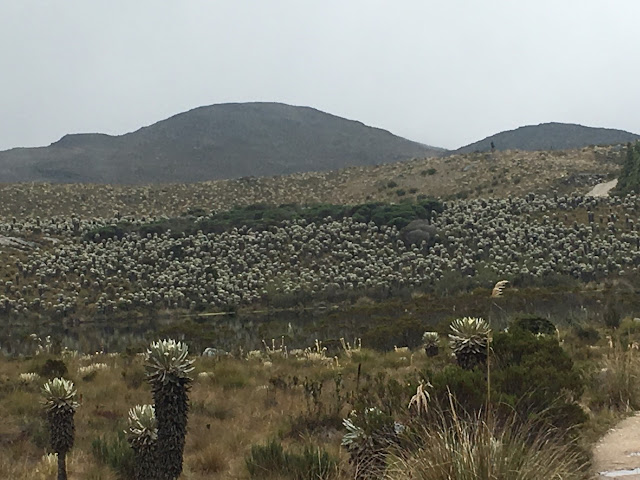
New Africa/Shutterstock
During the long, solitary days of lockdown, I found solace in raising houseplants. Suddenly stuck at home, I had more time to perfect the watering routine of a fussy Swiss cheese plant, and lovingly train our devil’s ivy to delicately frame the bookcases.
But I started noticing that these plants, sourced online, often arrived in the post with a passport. Most had travelled from all over Europe, with one common tagline: contains peat.
As a peatland scientist, these labels instantly filled me with horror. Hidden Peat, a new campaign launched by The Wildlife Trusts, is now highlighting the presence of peat in all sorts of consumer products, including house plants.
Peatlands, such as bogs and fens, store more carbon than all of the world’s forests combined. They trap this carbon in the ground for centuries, preventing it from being released into the atmosphere as greenhouse gases that would further warm the climate.
Peatlands have multiple environmental benefits. They are havens for wildlife, providing habitat for wetland birds, insects and reptiles. They supply more than 70% of our drinking water and help protect our homes from flooding.
So why on earth is peat being ripped from these vital ecosystems and stuffed inside plant pots?
From sink to source
Despite their importance, peatlands have been systematically drained, farmed, dug up and sold over the last century. In the UK, only 1% of lowland peat remains in its natural state.
Instead of acting as a carbon sink, it has become one of the largest sources of greenhouse gas emissions in the UK’s land use sector. When waterlogged peat soils are drained, microbes decompose the plant material within it and that results in the release of greenhouse gases such as methane into the air.
Most of the peat excavated, bagged up and sold in the UK is used as a growing medium for plants. Gardeners have become increasingly aware of this problem. Peat-free alternatives have been gaining popularity and major retailers have been phasing out peat-based bagged compost in recent years.
Indeed, the UK government announced they would ban sales of all peat-based compost by 2024. But this legislation has not yet been written and it seems unlikely it will be enacted before the end of the current parliament.
Even if brought in to law, this ban would only stop the sales of peat-based bagged compost of the type you might pick up in the garden centre. Legislation for commercial growers is not expected until 2030 at the earliest. So the continued decimation of the UK’s peatlands could remain hidden in supply chains long after we stop spreading peat on our gardens.
Hide and seek peat
For consumers, it’s almost impossible to identify products that contain peat or use peat in their production. All large-scale commercial mushroom farming involves peat and it is used for growing most leafy salads. It gives that characteristic peaty aroma to whisky, and, as I found out, is a popular growing medium for potted plants.
But you’d struggle to find a peat-free lettuce in the supermarket. The Hidden Peat campaign asks consumers to call for clear labelling that would enable shoppers to more easily identify peat-containing products. Shoppers are also encouraged to demand transparency from retailers on their commitment to removing peat from their supply chains.
You can ask your local supermarket about how they plan to phase out peat from their produce. Some supermarkets are actively investing in new technologies for peat-free mushroom farming.
Make informed purchases by checking the labels on garden centre potted plants or source plants from peat-free nurseries. The Royal Horticultural Society lists more than 70 UK nurseries dedicated to peat-free growing.
You can write to your MP to support a ban on peat extraction and, crucially, the sale of peat and peat-containing products in the UK. That ensures that peat wouldn’t just get imported from other European countries.
Pilots and progress
The UK government recently announced £3.1m funding for pilot projects to rewet and preserve lowland peat, with peat restoration seen as a cornerstone of net zero ambitions. This campaign calls for further acceleration of peatland restoration across the UK.
As a research of the science behind peatland restoration, I see firsthand the enormous effort involved in this: the installation of dams to block old agricultural drainage ditches, the delicate management of water levels and painstaking monitoring of the peat wetness.
I spend a lot of time taking samples, monitoring the progress, feeding results back to the land managers. Like many other conservationists, I work hard to find ways to preserve these critical habitats.
But sometimes, there may be a digger in the adjacent field doing more damage in a day than we could undo in a lifetime. That’s the reality, and the insanity, of the UK’s current peatland policies.
We heavily invest in restoring peatlands, yet fail to ban its extraction – the one action that would have the most dramatic impact. By demanding that peat is not only eradicated from garden compost, but weeded out of our supply chains, we can keep peat in the ground, not in pots.
—————————-
This blog is written by Cabot Institute for the Environment member, Dr Casey Bryce, Senior Lecturer, School of Earth Sciences, University of Bristol.
This article is republished from The Conversation under a Creative Commons license. Read the original article.





.jpg)
.jpg)
.jpg)




























